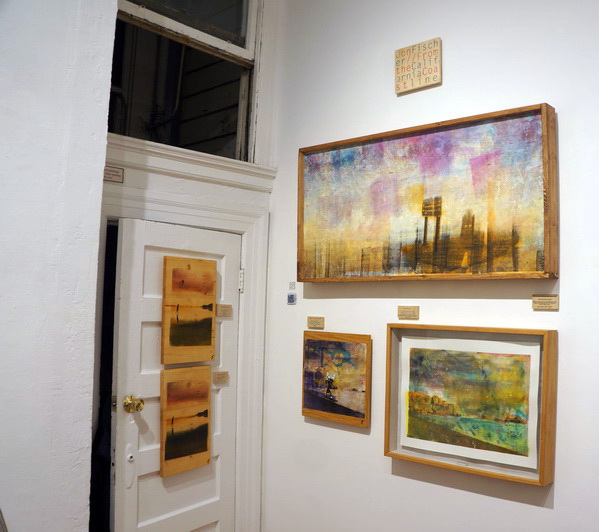“I thought the most beautiful thing in the world must be shadow.”
― Sylvia Plath, The Bell Jar
For what is likely my final offering in this record-smashing month of feather2pixelation, I am documenting some more stuff that I am finishing up for the CityArt April show.
I am most excited about a shadowbox prototype I slapped together for these Ocean Beach paper prints. Increasingly influenced by the impeccable eye of zMom as well as the practical concerns of selling scrap cardboard in a commercial art gallery, I am very slowly warming up to the concept of picture frames.
The primary concern is empirical. To me, the danger of presenting art behind a bunch of glass and mat board is that emphasizes the image over the physical. I don’t want people to approach this piece as a colorful picture of the California coastline. Much more preferable is an innate sense that comes from experiencing in person a luxuriously thick slab of paper with a surface textured in layers of saturated inks. Otherwise why not just print the shit out on my Epson and save $255 a month on studio rent?
That might not sound like a big deal, but in a world where there is no shortage of images–if anything, we live in a state of image overload–the more emphasis on the material properties of the art object the better. If I can’t smell, taste, or touch the art object, I hope to at least see it for what it is.
There is a need for visual artists working today to think of their work less as an image and more as an experience. This is partly for ego reasons and partly for the reason that not doing so would mean that there is no compelling reason for new visual art to exist.
Thought experiment: wouldn’t we be disappointed if we went to see the original Declaration of Independence in Washington and they had framed it in mat board? Anyone can Google the text or even an image of the Declaration of Independence, so why do we still go to the National Archives and wait in line for an hour? To see the physical ink on the original piece of parchment. It is a thrilling piece of paper to look at.
Cue the shadowbox! I feel like this is a very ideal solution, especially for paper work. That it is in essence a display case for a mere sheet piece of paper in a way serves to elevate the object in borderline absurd fashion (an exaggeration that has been thoroughly deconstructed in Twentieth century art). This particular shadow box might actually backfire, as it is made out of 3.5 inch-wide fir slats, casting a ridiculously long and possibly distracting shadow.
And I am still at a loss to make perfect miter joints.
Also: some new signage and an alternate take on yesterday’s teaser.
